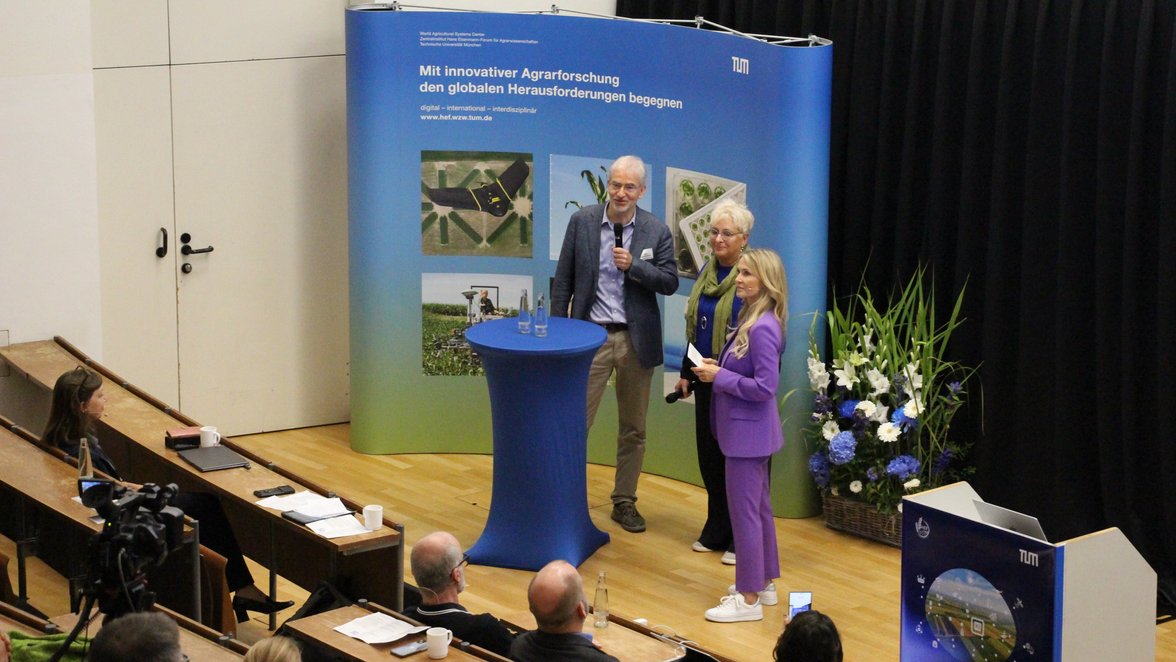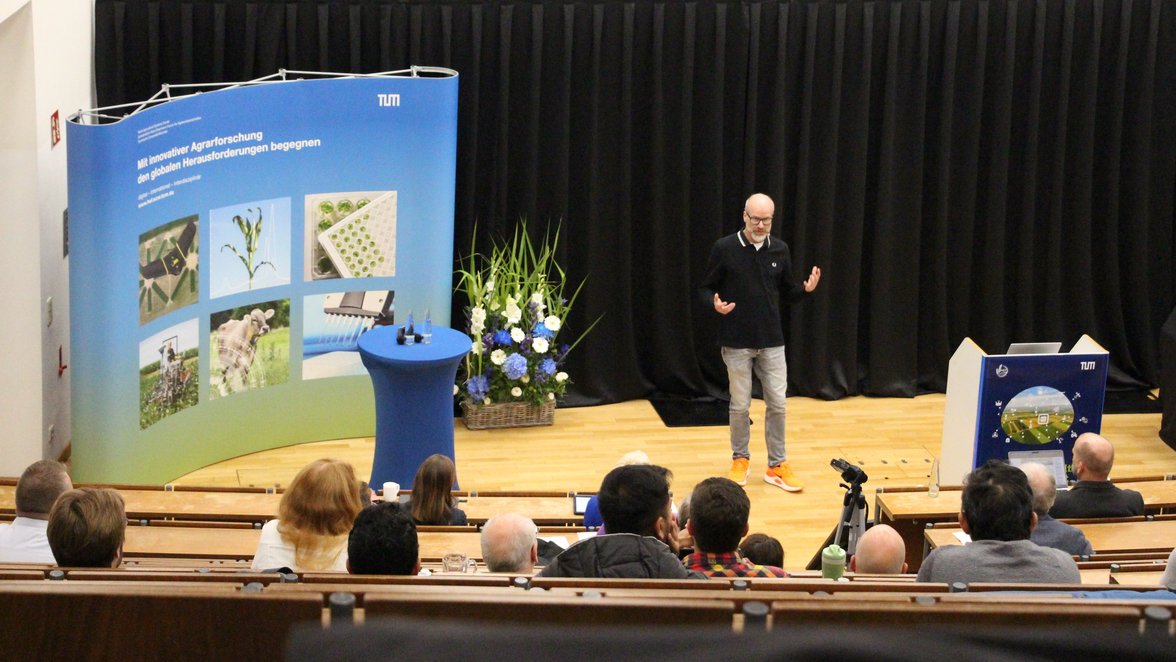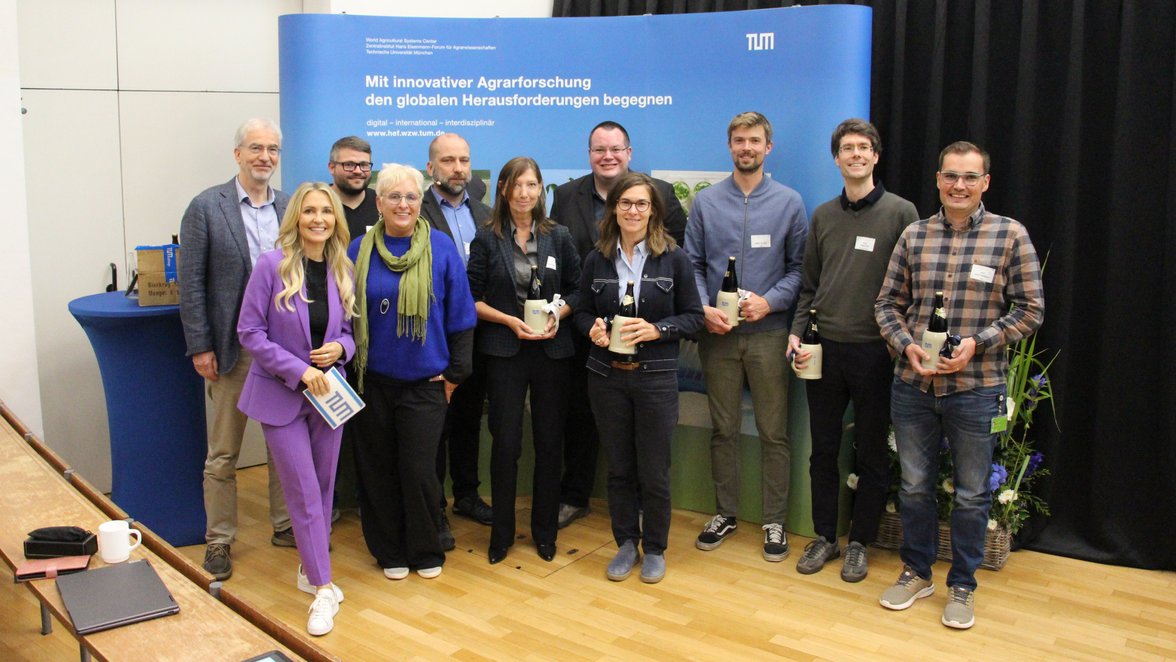How AI shapes agriculture
Campus, Digitalization, Event |
Where does AI stand in agriculture?
Yield optimization, ripeness monitoring, crop production, weed detection—AI has arrived in agriculture. The potential of AI lies primarily in its ability to process and utilize many different types of data simultaneously.
Weed detection
Monitoring weeds and detecting nutrient deficiencies with robots – Prof. Dr. Jürgen Gall from the University of Bonn presents the PhenoRob2 cluster of excellence. Here, robots with AI-supported software are used to support crop production in two ways. On the one hand, the software detects weeds and can remove them selectively using lasers; on the other hand, it detects fungal diseases in plants and can then apply the appropriate fungicide in the appropriate amount.
Prof. Dr. Florian Haselbeck from Weihenstephan-Triesdorf University of Applied Sciences (HSWT) also presents a research project on AI-based systems for weed detection, EWIS (evaluation and further development of modern artificial intelligence methods for automatic weed detection in sorghum using drones). Here, drones are equipped with deep learning-based software that can distinguish weeds from sorghum. To do this, the systems are trained using images that have been created and can then automatically mark the different plant species on images as they fly over.
Decision support systems
Prof. Dr. Jana Zinkernagel from Geisenheim University outlines the various daily challenges in vegetable cultivation: “For irrigation management alone, farmers here have to take countless parameters into account: the weather, the stage of development and root depth of the plants, soil parameters, the scope of the sensor network, documentation – and all of this ideally in a way that takes spatial heterogeneity into account.” Traditional methods often fail in the latter case. However, AI can facilitate the transition to site-specific irrigation.
Malte von Bloh presents a project by TUM, HSWT, and other project partners: Smartfield. The application supports decision-making in crop production. He shows results from trials in which the team compares the winter wheat cultivation of farmers and crop production consultants with the AI-based program. The result: although the fields under human supervision had higher yields, the grain quality was higher in the AI-based system.
... in the future?
Data, data, data
The speakers on this day agree: the future of AI in agriculture depends on data collection and analysis. Current data poses major challenges for research and application. It is usually too unspecific for the agricultural sector, too expensive to collect for individual applications, and often unavailable, resulting in an insufficient data basis. Possible solutions to these challenges could include standardized sensor devices or the automation of data collection, which could be significantly simplified and accelerated with AI.
Existing platforms could also fill the data gap, says keynote speaker Prof. Manuela Zude-Sasse from the Leibniz Institute for Agricultural Engineering and Bioeconomy. One example is FAIRagro, which is also supported by the HEF.
Transparency
Another challenge for AI in agriculture is transparency and explainability, emphasize Prof. Dr. Patrick Glauner from the Deggendorf Institute of Technology and Prof. Dr. Martin Atzmüller from the German Research Center for Artificial Intelligence (DFKI). Only then can AI be trusted to further promote its application.
“Agriculture faces a wide range of challenges. AI can help us overcome them,” said Prof. Dr. Senthold Asseng, Scientific Director of the HEF, summarizing the symposium. “Today, we have seen where it is already being used, but also where work still needs to be done to ensure it is used efficiently and effectively.”



